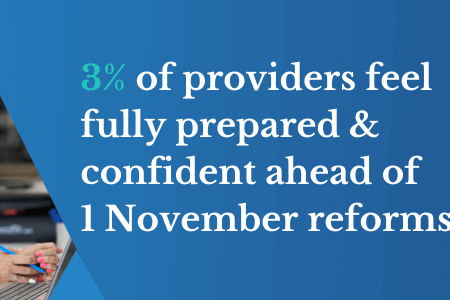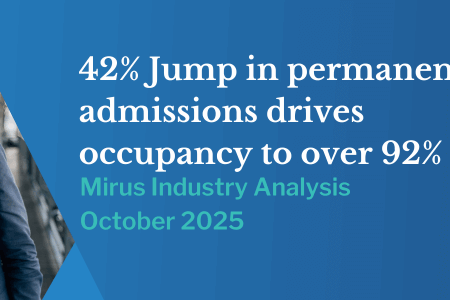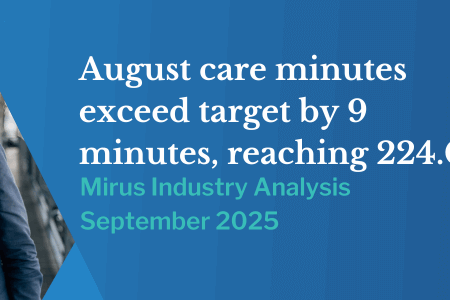Do you need help in understanding your data? (and the recent Medicare error!)
May 8, 2019 | Aged Care Finance

Understanding the April 2019 claims for residential aged care services.
“Providers that finalised April claims in the first three (3) days of May 2019 identified an error with the payment of ACFI subsidy impacting the eight highest ACFI classifications. Each of the classifications were paid the incorrect, and lower rate of $183.67 (please see table 1)
TABLE 1
Payment Type | Daily rate entitlement (what should have been paid) | Daily Rate Payment Amount (actual) | Difference |
HHH | $238.41 | $183.67 | $54.74 |
HMH | $217.39 | $183.67 | $33.72 |
HHM | $215.46 | $183.67 | $31.79 |
HLH | $207.36 | $183.67 | $23.69 |
MHH | $204.09 | $183.67 | $20.42 |
HNH | $198.01 | $183.67 | $14.34 |
| HMM | $194.44 | $183.67 | $10.77 |
| HLM | $184.41 | $183.67 | $0.74 |
Services affected by this error will need to wait until they finalise the month of May 2019 claims to be back paid the missing revenue. Then be tasked with reconciling what should have been paid and what is actually paid to ensure accuracy. It can be challenging enough processing and ensuring the accuracy of a standard payment statement let alone one that has errors! It is a big job to reconcile every payment type for each resident of every day of the month. Several items are consistently requiring adjustment and they are all related to means assessment; this error seems to be no different.
We can only speculate as to why this error occurred. Certainly, the revenue injection effective 20th March 2019 may have been a contributing factor. The metrics we are seeing in error are data that required alterations in order to fund the ministerial mandate. But are there other complicating factors? Is the department trying to implement a rate ceiling to protect its means-tested care fee-paying residents from footing a portion of this revenue boost? It is interesting that this 9.5% increase is being treated as a normal indexation with regard to people contributing to their own care. Is it right that it would seem care recipients are footing the bill for this revenue injection? In a normal indexation, the values are increased based on the rising costs of care and so are justifiably passed to the consumer, but this 9.5% injection is over 6 times more than a normal indexation increase.
The department has said that only RACs finalising April claims between the 1st and 3rd of May are affected and they may have received a reduced rate of ACFI. This means that only about 15% of facilities in the industry are impacted. However, means-tested care fees (MTCFs) are being applied at the “correct” rate i.e. a fully means tested resident on HHH is showing MTCF of $238.41 per day, which is another challenge.
All MTCF paying residents are being asked to pay an additional 9.5%* for 103 days. Facilities that are not impacted by the rate error will still need to contend with MTCF residents being asked to pay more which increases the scope of impact for this series of events to include almost everyone.
As we are nearing the end of the financial year many providers are beginning to ask what ACFI rates will look like in the new year. This year there will be more changing than just the usual addition of an indexation rate (or what many refer to as COPE). FY18-19 saw two (2) separate funding boost events that are both scheduled to expire on 30 June 2019. Apart from rolling back those increases, on 1 July there will be an indexation applied to all rates. The actual amount of indexation will likely be announced in the 2nd half of June, but I estimate a bump of ~1.5%. CPI and wage growth, which are the two main variables in calculating the indexation of rates, are performing almost identical to last year, so we can expect to see a rate increase between 1.4% – 1.5%. However, unlike last year, when the 1.4% increase only applied to ADLs and BEHs while CHC was restricted to half indexation (or 0.7%), this year the 1.4% – 1.5% increase should be applied across all domains.
I have spent several years working in the Medicare revenue sector of the aged care industry. I have seen and resolved all sorts of baffling payment items. One of my preferred tools is a data analytics platform that enables me to break down Medicare payments by the resident by payment type by day. Almost all of Mirus Australia clients are able to realise financial benefit as soon as they access Mirus Metrics by way of identifying missed funding. Mirus Metrics contains several out of the box reporting solutions to ensure accurate payments across all Medicare revenue items. We also offer bespoke solutions to target very specific issues. Please reach out to us if you’d like to continue this conversation. We can help you ensure the accuracy of your payments whether you’ve been impacted by this recent event or not.
We can help you to better understand your data.”
Tyler (Ty) Fisher is a data nerd and proud of it. Actually, Ty is way more than a data nerd as he leads the Business Intelligence team at Mirus Australia providing expert business revenue and management process advice. Join Ty on LinkedIn.
*up to the individual’s assessed cap


